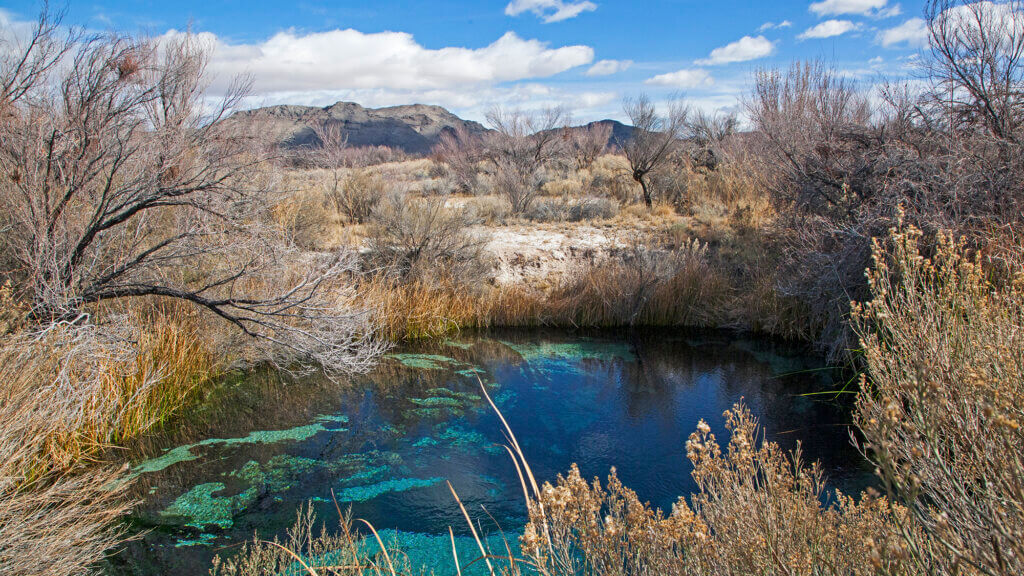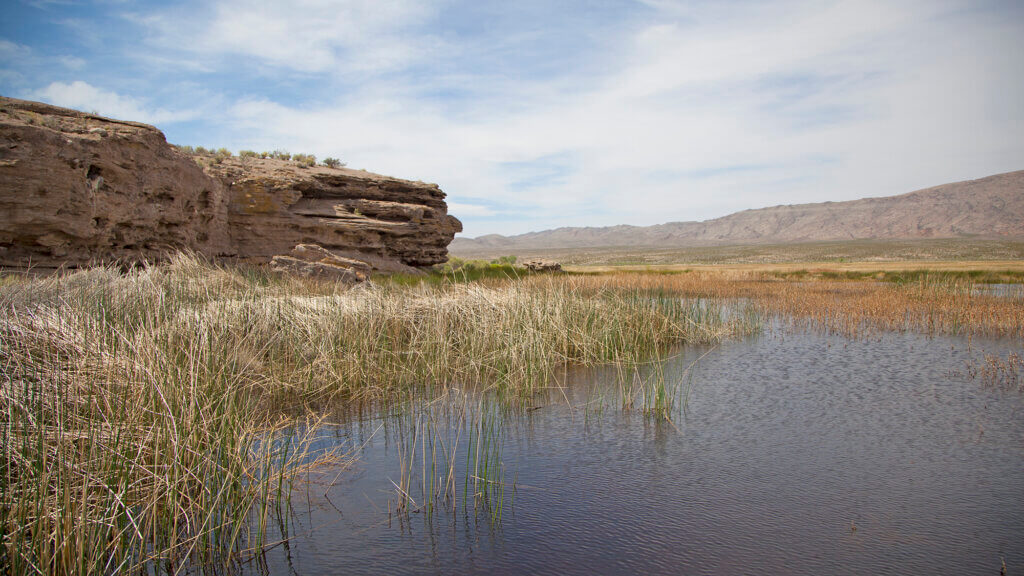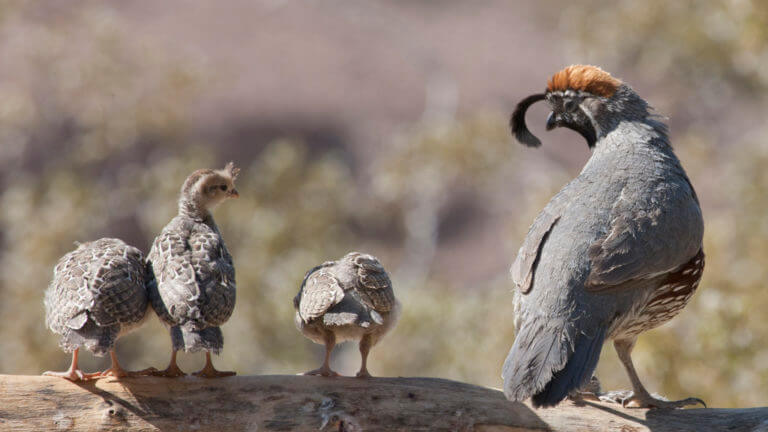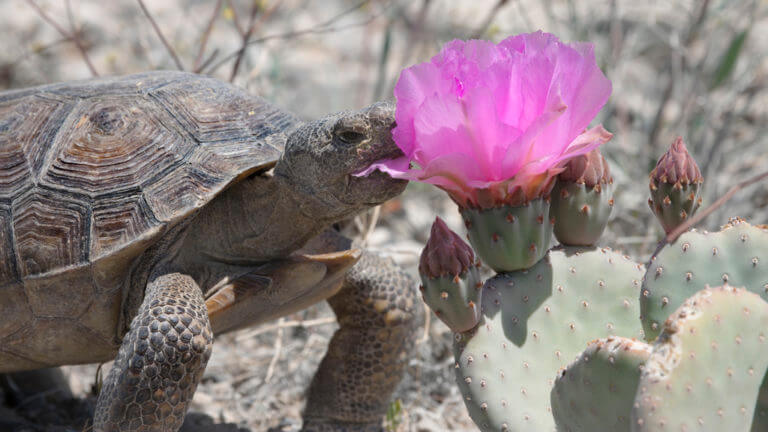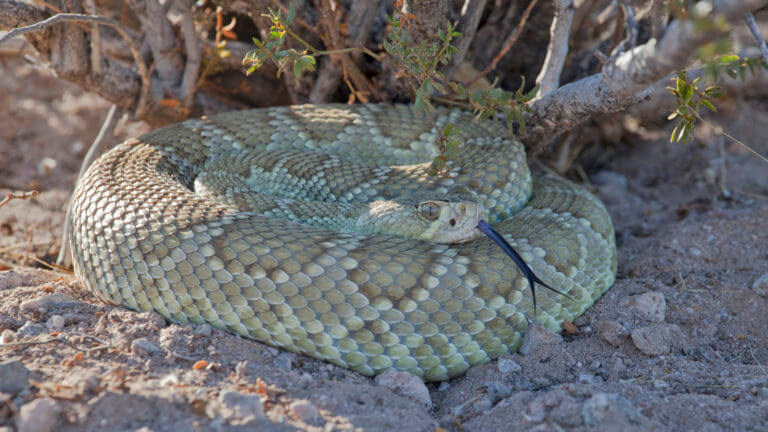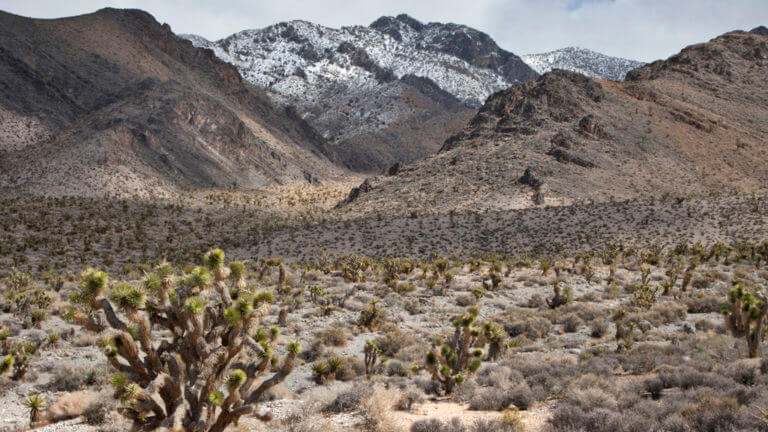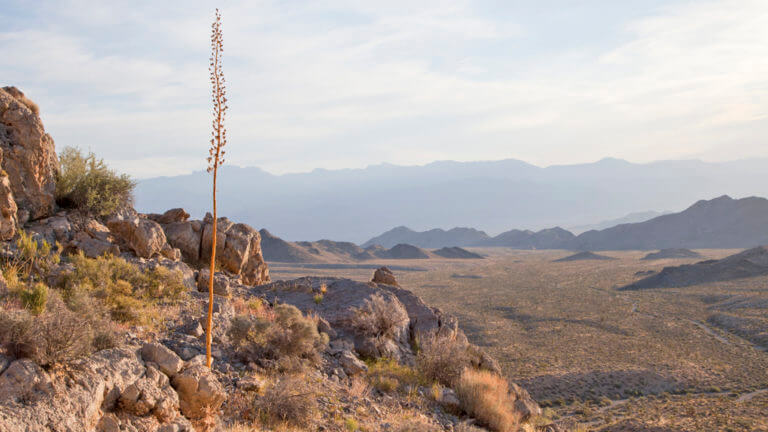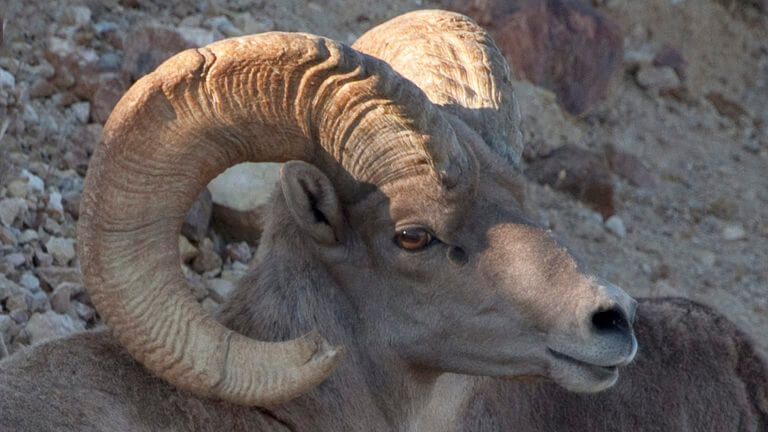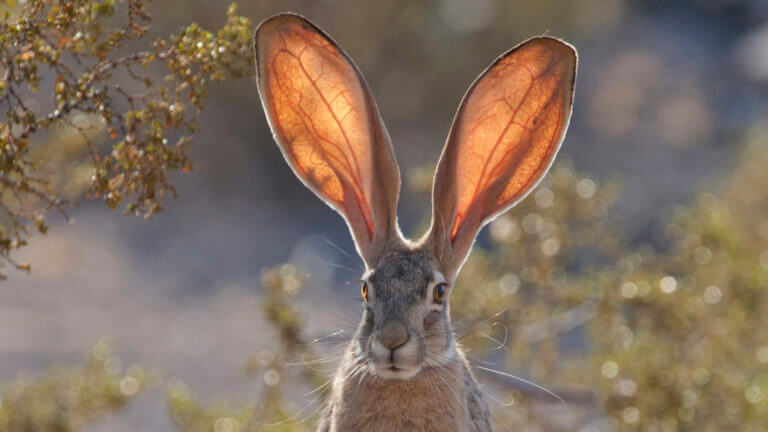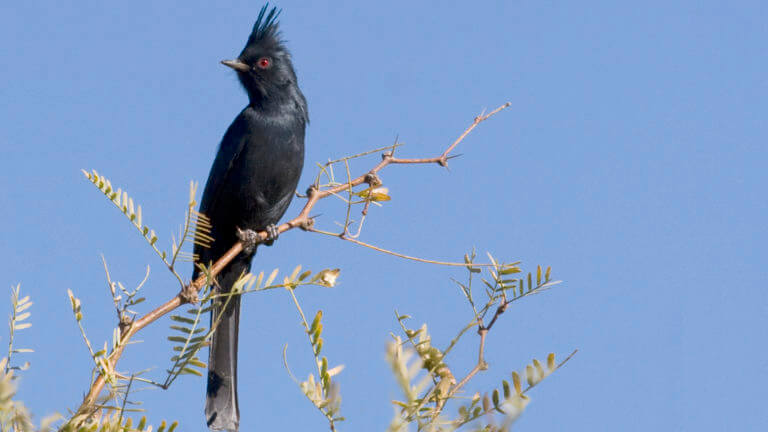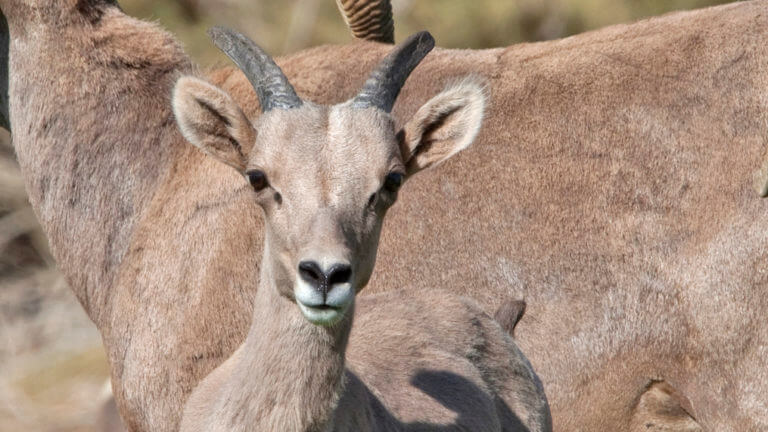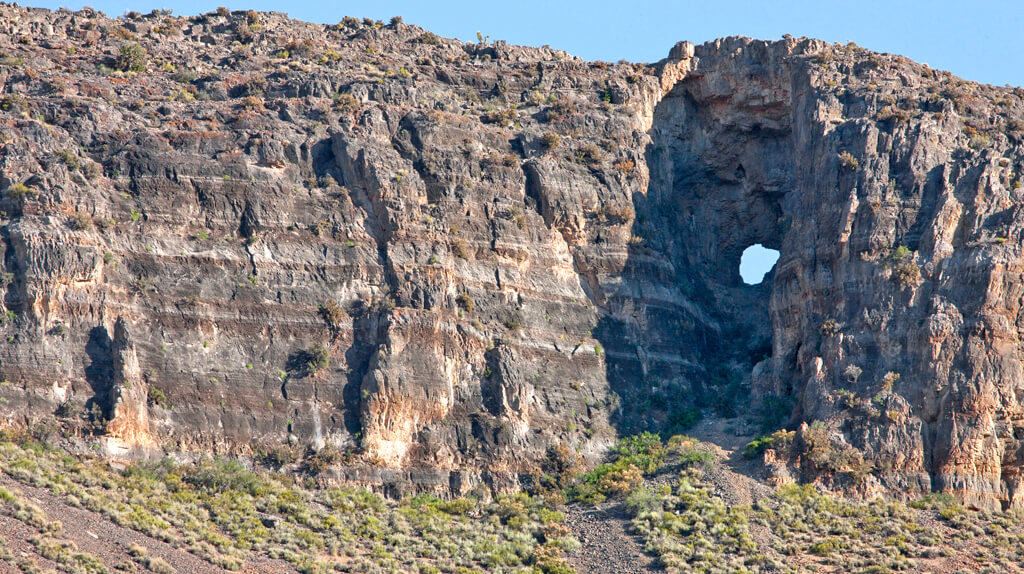
Desert National Wildlife Refuge
Twice the size of Rhode Island plus 250,000 football fields, the largest national wildlife refuge in the contiguous U.S. is found in Nevada, just north of Las Vegas. Established in 1936, southern Nevada’s Desert National Wildlife Refuge was created to protect a variety of species—a handful of which thrive here, and are found nowhere else on earth—but specifically to establish a protected habitat for desert bighorn sheep, the Nevada state mammal.
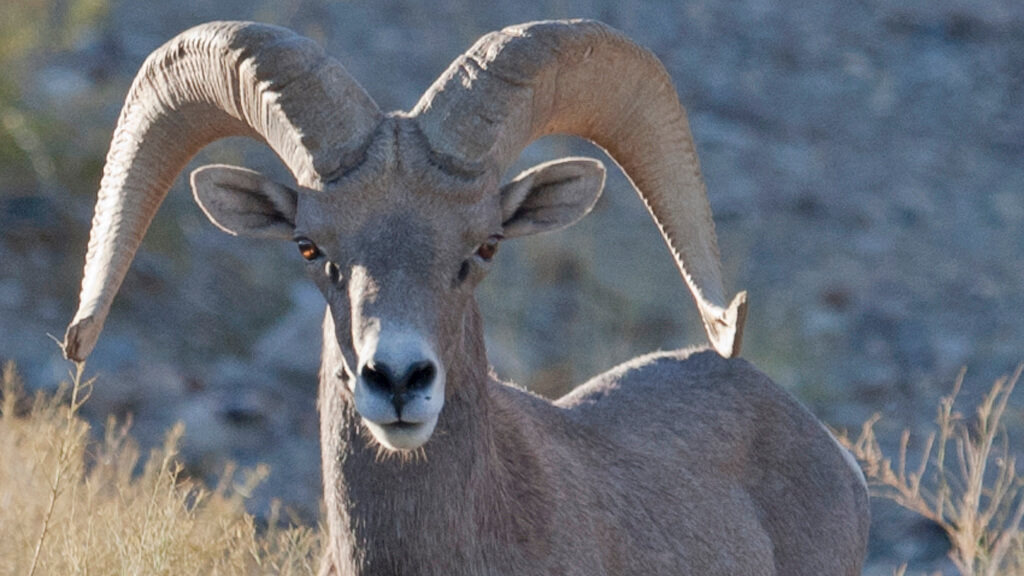
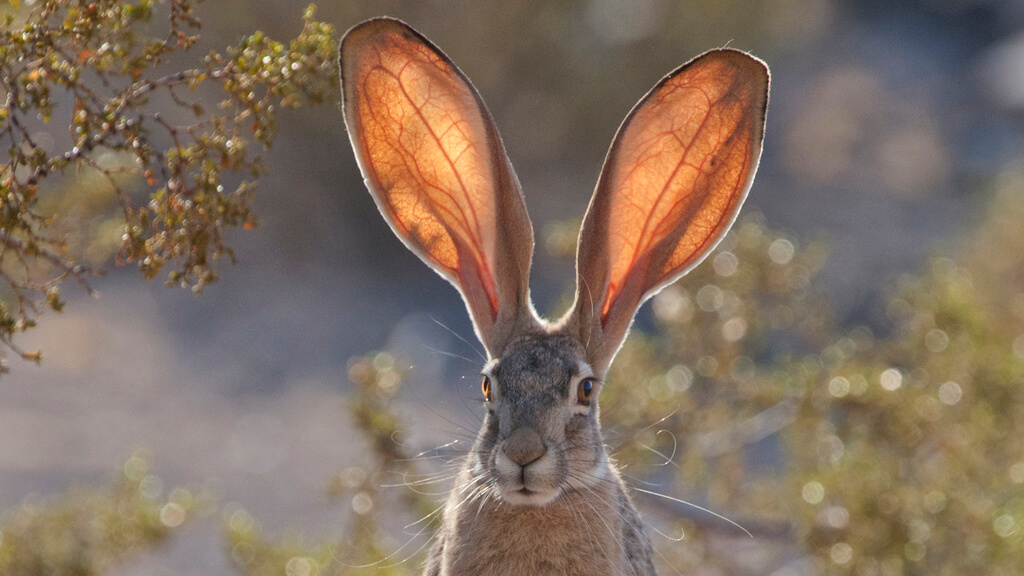
Spanning an unbelievable 1.6 million acres in southern Nevada, Desert National Wildlife Refuge encompasses six major mountain ranges and seven distinct life zones. Showcasing just how large and remarkable this place is, there are actually three separate refuges within Desert NWR – Ash Meadows, Pahranagat, and Moapa Valley.
Home to the Nuwuvi (or Southern Paiute) people for thousands of years, this massive chunk of land was later home to ranch homesteaders in more recent history. Today, visitors flock to the area to dive into recreational splendor is high elevation backcountry, which makes for a popular way to escape the summer heat for locals and visitors alike. Camping, hiking, off-roading, hunting, are popular activities in the refuge, though wildlife viewing and photography totally takes the cake.
It’s easy to understand why when you learn that the Desert National Wildlife Refuge is home to 320 bird species, 53 mammal species, 35 reptile species, four amphibian species, and over 500 plant species—some of which are found nowhere else in Nevada, or the world. Perhaps most impressive, is that this vast landscape includes flora and fauna from both the Mojave Desert, as well as the Great Basin Desert. Two of America’s four deserts in one National Wildlife Refuge? Count. Us. In.
Discover Alamo, Gass Peak and Mormon Well Road
Mormon Well Road & Gass Peak Road
Mormon Well Road promises panoramic, breathtaking views of Nevada backroads. This route stretches through Desert Pass, covering 47 miles of land to connect up with the Great Basin Highway, or U.S. 93 north of Las Vegas close to Alamo. If you’re looking to extend your backroad experience, take Gass Peak Road, which branches off of Mormon Well Road, taking visitors on a loop throughout the Las Vegas Range. A 4×4 vehicle that can handle a rocky, mostly unmaintained dirt road is required for all of these routes, extra fuel wouldn’t hurt either.
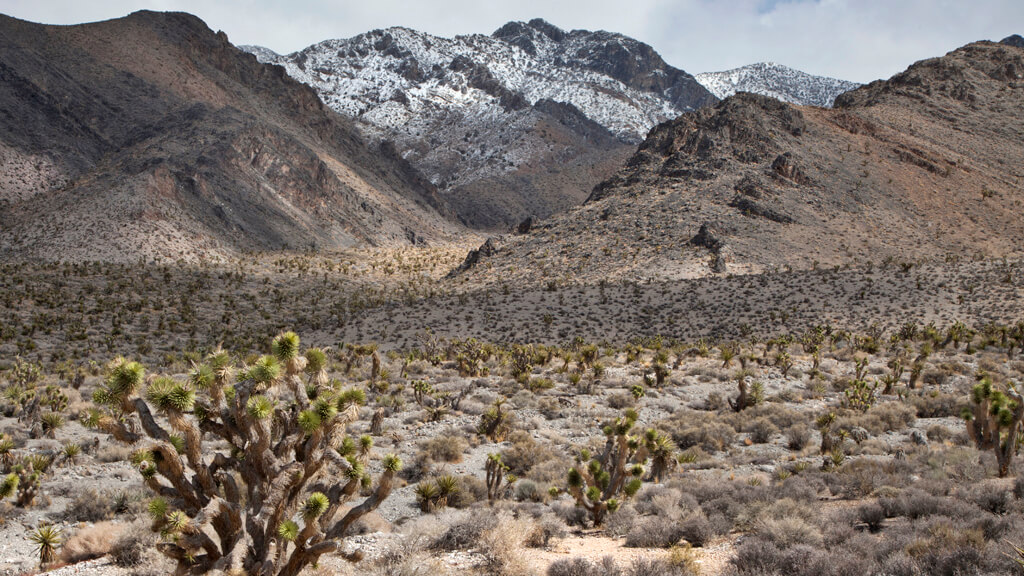
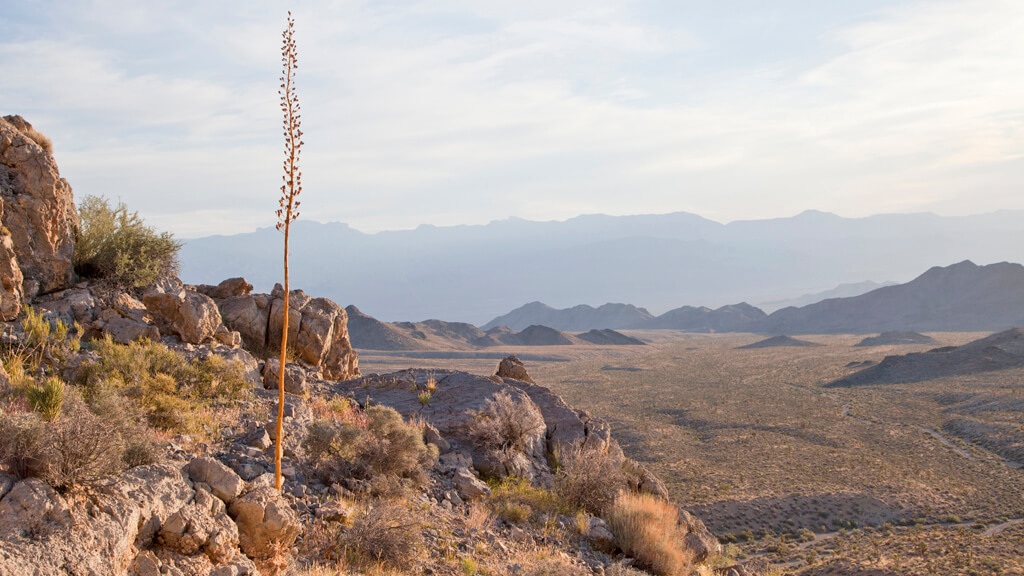
Alamo Road
Spanning over 70 miles into the Nevada desert, Alamo Road is the back road from Pahranagat National Wildlife Refuge to Alamo—’cause who needs paved highways when you have this caliber Mojave Desert landscape to rip through? The Dry Lake portion of the road is often impassible, so be sure to call ahead to make sure it’s open and accessible.
For the most up to date info on current road conditions, click here.
Corn Creek Visitor’s Center
Though the Desert National Wildlife covers some serious ground, the visitor center is best accessed via Corn Creek. Here, swing through interpretive exhibits and a gift shop with a bookstore. Before heading out to explore the refuge, be sure to watch a short film about the different parts of the wildlife complex, where you can zero in on the vast variety of plants and animals that call the area home.
From the visitors center, set out on one of five trails, three of which are ADA accessible. These well maintained trails meander through Caribbean-esque pools, which are home to endangered Pahrump poolfish found nowhere else on earth. One of the trails ultimately ends at Railroad Tie Cabin, which as you might guess—was built with railroad ties from the abandoned Las Vegas and Tonopah Railroad. The cabin dates back to the 1920s, and a must-see when visiting the area. From Corn Creek, visitors can also access Hidden Forest, which features another historic cabin nearly 16 miles away, and Hayford Peak, a 2.5 mile hike that takes visitors to the highest point of the refuge at 9,912 feet elevation.
Camping at Desert National
When exploring an area twice the size (and then some!) of Rhode Island, you’re going to want to plan for more time than just one afternoon. Extend your time in this stunning and expansive National Wildlife Refuge by reserving a campground at the Desert Pass Campground. Surrounded by ponderosa pines, the site is just 28 miles from the Corn Creek Visitors Center and an excellent getaway for one or several nights. The site features primitive campgrounds with six established sites, and its elevated altitude and cooler temperatures makes for the ultimate summer refuge during sweltering summer months.
Getting There and Info to Know Before You Go
The best way to get more in-depth information on Ash Meadows, Pahranagat and Moapa Valley is to start with Desert National’s visitor center at Corn Creek. From downtown Las Vegas, the Corn Creek Visitor Center is about 30 miles out. Spring and fall are ideal times to visit Desert National (and all other wildlife refuges that are part of this vast complex) because the temperatures are comfortable, and wildlife is typically out and about. During the summer months when it’s much hotter (when temperatures are known to exceed 100 degrees,) wildlife tends to hunker down and find their own shade, only making appearances during the evening hours. Boost those desert bighorn spotting ops, and plan to visit during these shoulder seasons, or during evening hours when they’re likely to re-emerge.
When traveling Nevada backroads, be sure to live by the Dirt Road Code by traveling with 4×4 access and a spare tire. Carry plenty of snacks and water, be sure to let someone know where you’re headed and when you plan to return, and practice Leave No Trace methods whenever possible. If you plan to check out Mormon Well and Gass Peak Roads, be sure to carry extra fuel, too.
Hours:
The Corn Creek Visitors Center, within Desert National Wildlife Refuge, is open Thursday through Monday from 8:00 AM to 4:00 PM, closed Tuesdays and Wednesdays.
Admission:
Admission to the Corn Creek Visitors Center is free! Enjoy an 11,000 square foot building with interpretive exhibits, short films about the plants and wildlife that live in the refuge, restrooms, water, maps, and more information about area trails and campgrounds.
This Location:
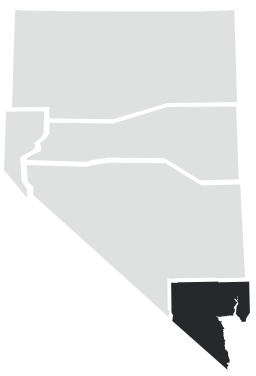
City
Las VegasRegion
Southern Nevada
